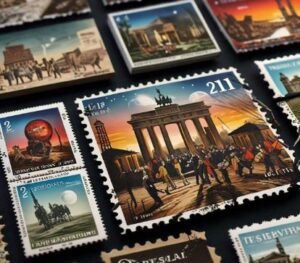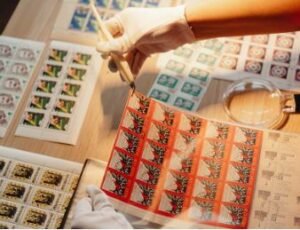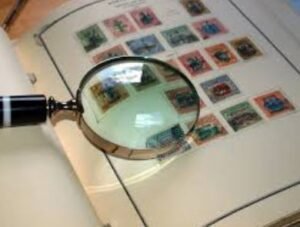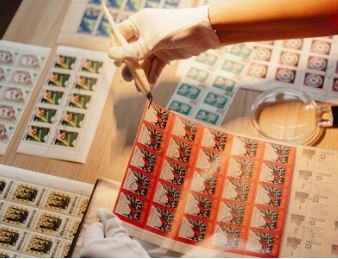Stamp collecting is more than just a hobby; for many, it’s an investment. Whether you’re a seasoned philatelist or a beginner, understanding how to research stamp values is crucial to ensuring your collection is properly valued. The process of determining stamp worth can be complex, as it involves not just market demand but also rarity, condition, age, and historical significance. In this article, we’ll share expert tips on how to research stamp values, helping you confidently assess your stamps and navigate the world of stamp valuation.

Why Knowing How to Research Stamp Values is Important
Before diving into the steps of how to research stamp values, it’s important to understand why it matters. Whether you’re looking to sell, trade, or simply keep track of the worth of your collection, accurate stamp valuation helps you avoid overpricing or underpricing your stamps. It also allows you to:
- Maximize the value of your collection by identifying high-value stamps.
- Protect your investment by ensuring that your collection is appropriately insured.
- Make informed decisions when purchasing stamps, avoiding overpaying for items that may not be as valuable as they seem.
Now that we’ve established the importance of researching stamp values, let’s explore the best methods for determining your stamp’s worth.
Step 1: Consult a Stamp Price Guide
One of the most common methods to start researching stamp values is to consult a stamp price guide. These guides provide listings of stamp values based on condition, rarity, and demand in the current market. There are several types of price guides available:
- Printed Price Guides: These are books published by experts in the field, such as the Scott Standard Postage Stamp Catalogue or the Michel Catalog. They are excellent resources for identifying and valuing stamps from various countries.
- Online Price Guides: Many websites and online philatelic communities, such as StampWorld or Colnect, provide up-to-date listings and price estimates for stamps. These platforms allow you to easily search by country, issue, and year.
Price guides will give you a general idea of a stamp’s value, but keep in mind that prices fluctuate based on market conditions, so it’s important to use them as a starting point for how to research stamp values, not as definitive sources.
Step 2: Assess the Condition of Your Stamp
Once you have access to a stamp price guide, you need to evaluate the condition of your stamp. The condition of a stamp plays a significant role in its overall value. Stamps are generally graded based on several factors:
- Centering: The alignment of the design within the borders of the stamp. Stamps that are well-centered are generally more valuable.
- Perforations: The edges of stamps are perforated, and stamps with intact and clean perforations tend to be worth more than those with torn or damaged perforations.
- Gum: The gum is the adhesive on the back of the stamp. Unused stamps with original gum are more valuable than those that have been degummed or have no gum.
- Creases, Tears, and Folds: Any physical damage can dramatically reduce a stamp’s value. The fewer creases or tears, the better the stamp’s worth.
- Postmark: For used stamps, the condition of the postmark (whether it’s clear, partial, or complete) can affect its value. A heavily canceled stamp may be worth less than one with a clear cancellation.
Grading stamps accurately is a skill that takes time to develop, but researching stamp values often requires you to assess your stamps with a critical eye to determine how the condition affects their worth.

Step 3: Study the Rarity of the Stamp
Another key factor when researching stamp values is understanding the rarity of the stamp. Stamps can be rare for various reasons, including limited print runs, printing errors, or unique features that make them stand out. The rarity of a stamp often correlates directly with its market value. Some factors that influence a stamp’s rarity include:
- Limited Editions: Stamps that were issued in small quantities, especially those from special events or limited releases, tend to be more valuable.
- Printing Errors: Stamps with printing errors, such as inverted colors, misprints, or double images, are often highly sought after by collectors. However, be cautious, as not every error adds value—some are more common than others.
- Historical Significance: Stamps with historical significance, such as those issued during wartime or commemorating significant events, often hold greater value.
When researching stamp values, always take note of the rarity of the stamp and how this impacts its overall worth in the marketplace.
Step 4: Explore Auction Results and Sales Data
Auction houses and online marketplaces are valuable resources for researching stamp values. By reviewing past auction results, you can get a clear picture of what similar stamps have sold for in recent years. Websites such as eBay, Heritage Auctions, and Stamp Auction Network provide detailed auction histories and price trends for specific stamps.
These platforms can give you real-time data about what collectors are paying for certain stamps. By comparing your stamp to similar items that have been sold, you can better estimate its market value.
Additionally, some auction houses and dealers provide free appraisal services, so it’s worth reaching out to professionals for a more detailed valuation of your stamps.
Step 5: Consult Experts and Stamp Dealers
For collectors who want a more accurate valuation, consulting with experts and stamp dealers is an important step in researching stamp values. Stamp dealers are often very knowledgeable and can provide you with precise information about your stamp’s worth, especially when it comes to rare or valuable items. Many dealers specialize in specific types of stamps or regions, so finding an expert in the area that interests you will help you get the most accurate valuation.
When working with dealers, always ensure that they are reputable and well-established in the philatelic community. You can check for certifications or affiliations with respected organizations like the American Philatelic Society (APS) to verify their credibility.

Stamp collecting has been a popular hobby for generations, and many enthusiasts have fond memories of their first stamp albums, often shared with family members. But as with any hobby, stamp collecting as a family activity can be both a source of joy and a potential source of financial strain. So, is stamp collecting a family activity the perfect way to bond, or does it come with hidden costs that can make it more expensive than expected? Let’s explore the pros and cons of sharing this hobby with your loved ones.
Step 6: Follow Market Trends and Demand
The value of stamps can fluctuate based on market demand. For example, the popularity of certain countries, historical periods, or types of stamps can cause prices to rise or fall over time. Keeping an eye on market trends is essential for accurately researching stamp values and understanding how current events might impact the value of your collection.
Many stamp dealers and collectors also participate in online philatelic forums, where you can get advice and opinions about the value of specific stamps. Online communities like StampBoards or Reddit’s r/philately can help gauge market trends, as they allow you to ask questions and discuss stamp values with other collectors.
Conclusion: How to Research Stamp Values and Determine Worth
In conclusion, researching stamp values is an essential skill for any serious collector. By using a combination of stamp price guides, assessing the condition of your stamps, evaluating rarity, exploring auction results, and consulting with experts, you can make informed decisions about your collection’s worth. Understanding how to research stamp values properly will not only help you determine the financial value of your stamps but also deepen your appreciation for the history, art, and culture they represent.
Remember, the key to researching stamp values is patience and persistence. The more effort you put into learning about your stamps, the more rewarding the experience will be—both intellectually and financially.




